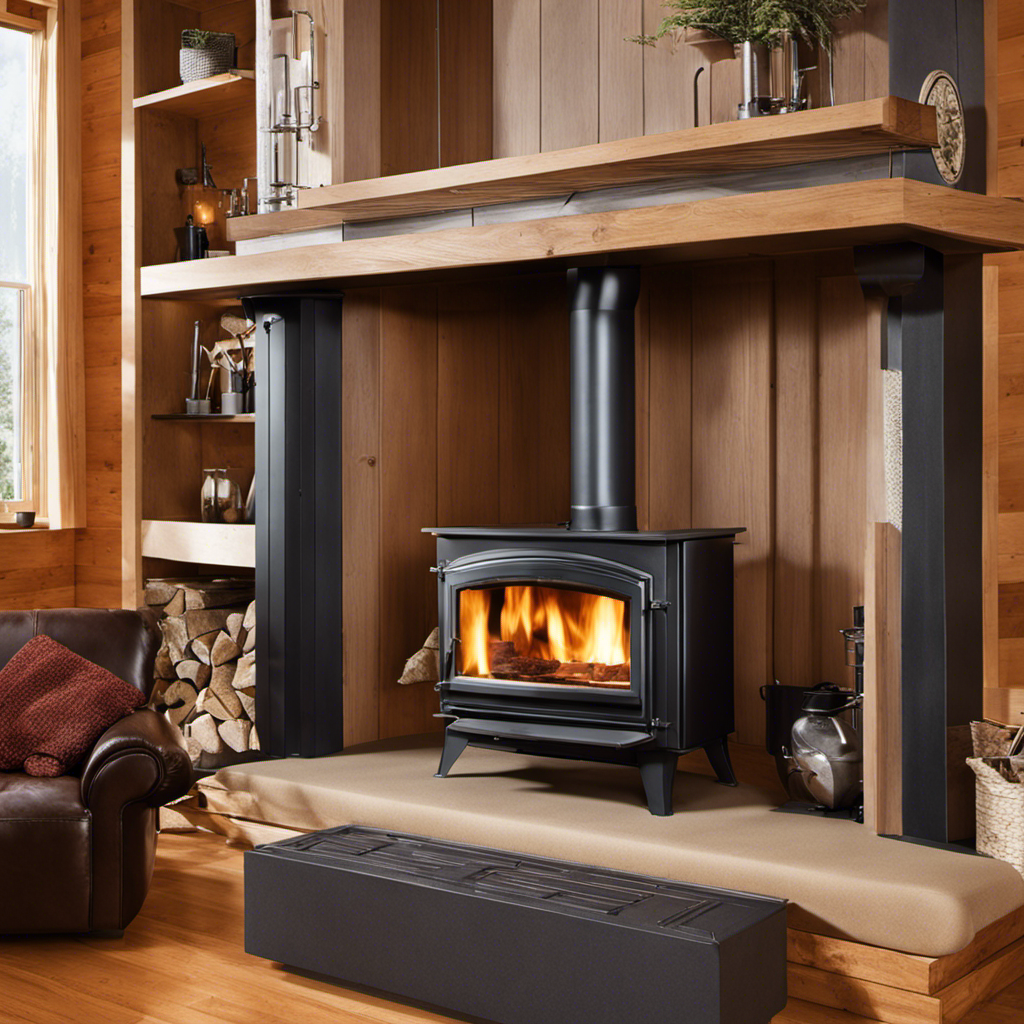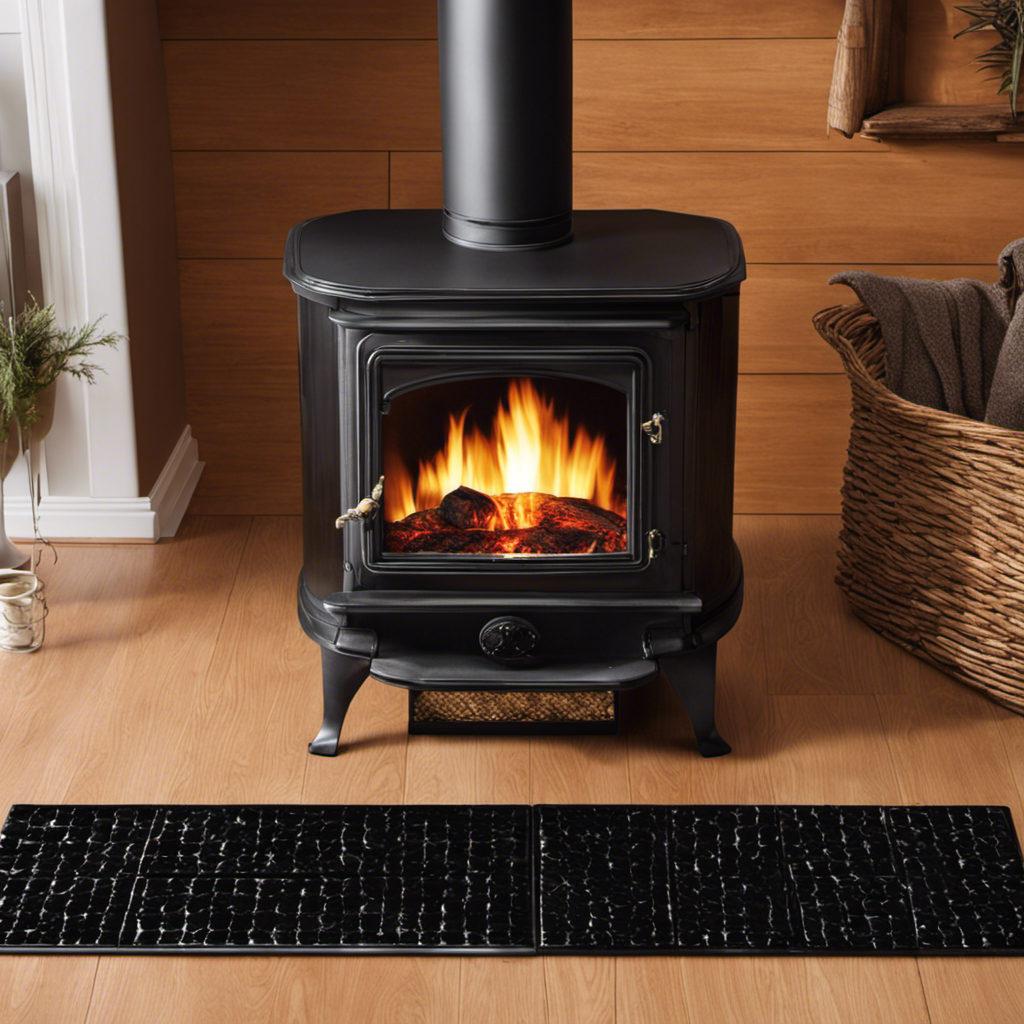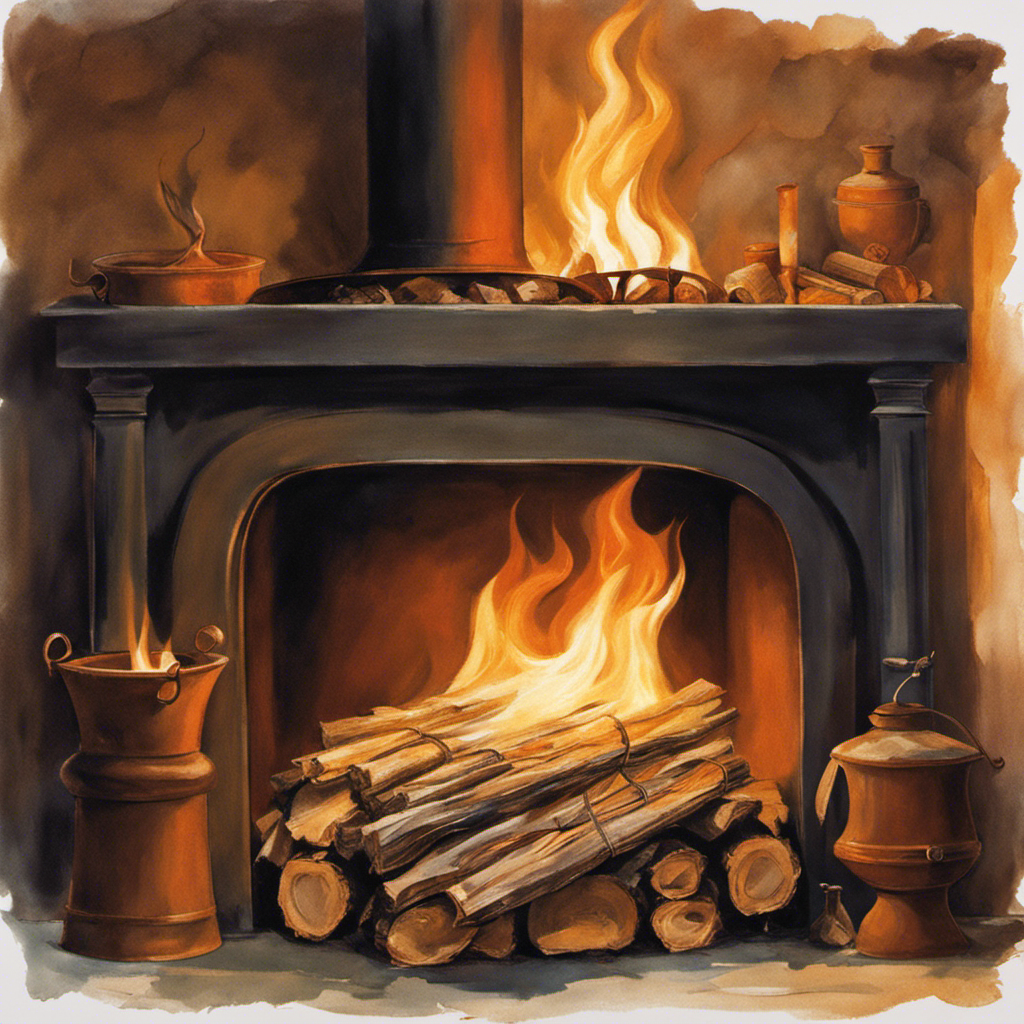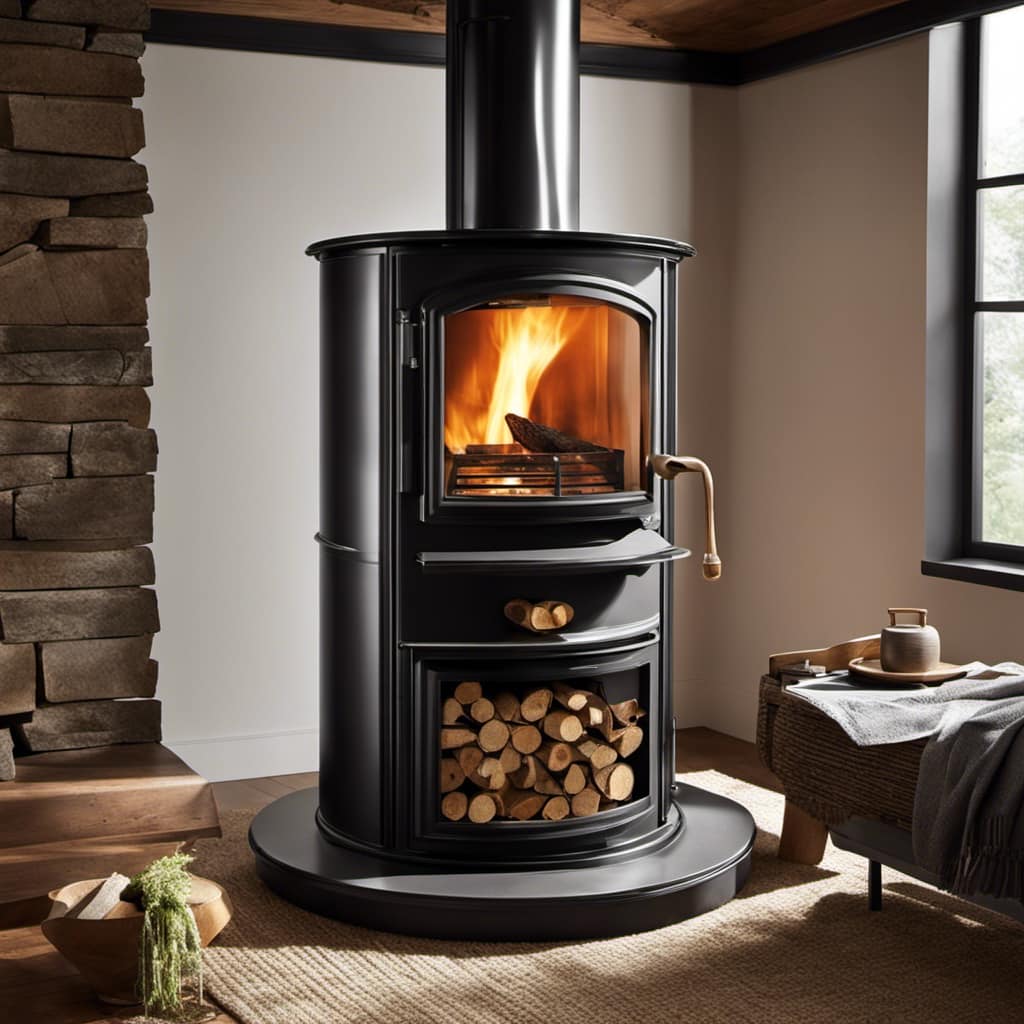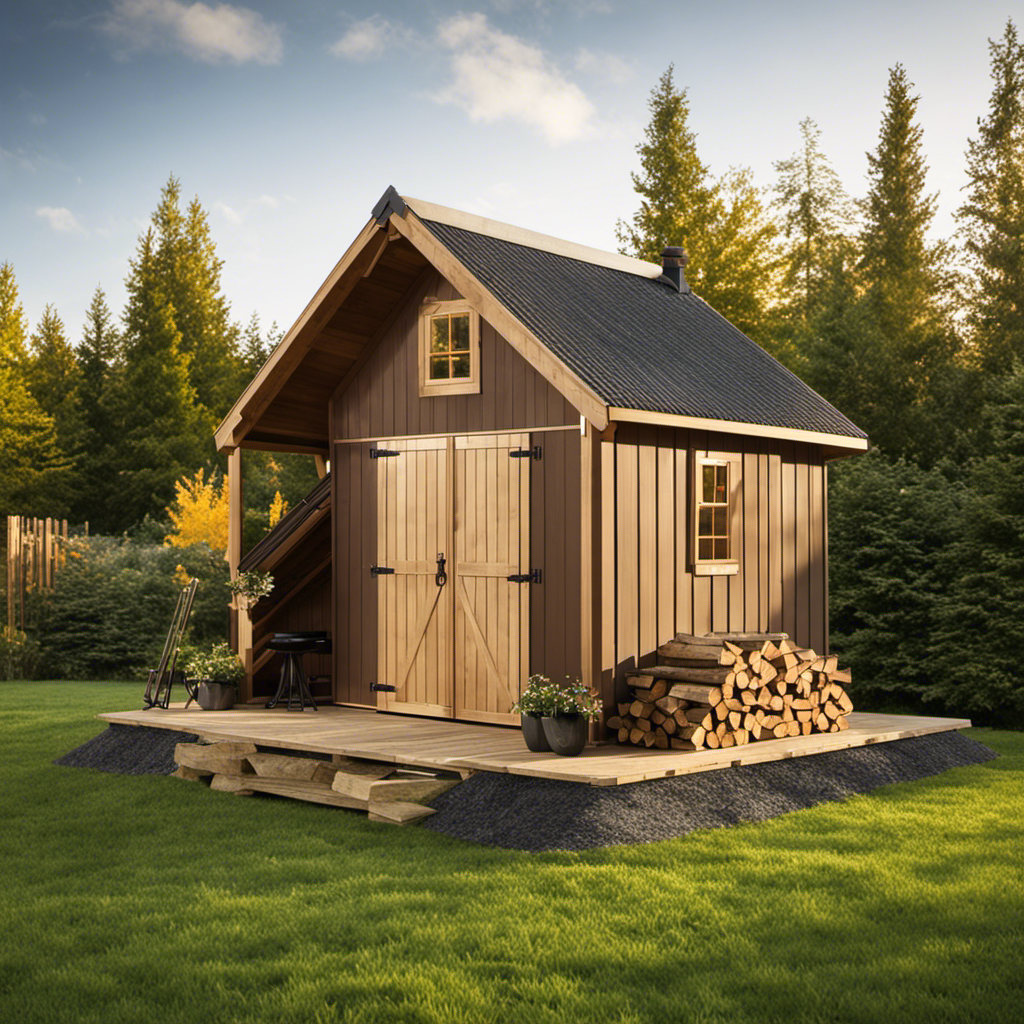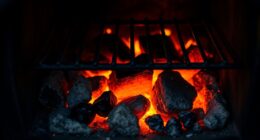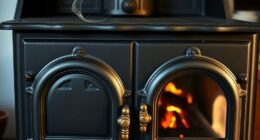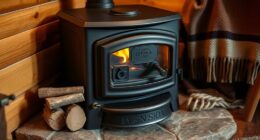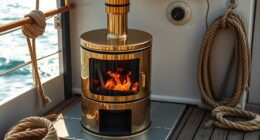Seeking an upgrade for your home’s heating setup? Considering the installation of a double-wall pipe for your wood stove? Your search ends here.
In this guide, I’ll walk you through the process step by step. We’ll cover everything from choosing the right pipe size to troubleshooting any issues that may arise.
With the right tools and a little know-how, you’ll have your wood stove up and running in no time. Let’s get started!
Key Takeaways
- Consider clearance distance and follow guidelines and codes for accurate measurement
- Use the correct tools and materials and properly seal all connections during installation
- Clean and inspect the wood stove before installation to ensure optimal condition
- Insulate and securely connect the double wall pipe sections, checking for gaps or loose fittings
Choosing the Right Double Wall Pipe Size
Which double wall pipe size should I choose for my wood stove installation?
When selecting the correct diameter for your double wall pipe, it’s crucial to consider the clearance distance. The clearance distance refers to the amount of space required between the pipe and any combustible material. This distance ensures proper ventilation and minimizes the risk of fire hazards.
To measure the clearance distance, you’ll need to follow the manufacturer’s guidelines and local building codes. It’s essential to accurately measure the distance to determine the appropriate pipe size. Additionally, take into account the size of your wood stove and the overall layout of your installation.
Gathering the Necessary Tools and Materials
I’ll start gathering all the necessary tools and materials for the wood stove installation. It’s important to have everything on hand before beginning the installation process. Here are some tips for maintaining a wood stove double wall pipe and common mistakes to avoid during installation.
First, ensure you have the correct size double wall pipe for your wood stove. Measure the diameter of the stove’s flue collar to determine the appropriate size.
Next, gather a tape measure, level, screwdriver, drill, chimney brush, and high-temperature sealant. These tools will assist in properly installing and maintaining the double wall pipe.
When installing the double wall pipe, ensure that it’s securely fastened and that all connections are properly sealed. Common mistakes to avoid include using too much sealant, which can create a blockage, and not properly aligning the sections of pipe, which can cause leaks.
Regular maintenance of the double wall pipe is crucial for its longevity. Clean the pipe regularly using a chimney brush to remove any creosote buildup. Additionally, inspect the pipe for any signs of damage or deterioration.
Preparing the Wood Stove for Installation
After gathering all the necessary tools and materials, I’ve prepared the wood stove for installation by cleaning it thoroughly and ensuring it’s in proper working condition. Cleaning the wood stove is an essential step to remove any buildup of soot, creosote, or debris that could potentially cause a fire hazard.
I carefully inspected the stove, checking for any signs of damage or wear, and repaired or replaced any components as needed. Additionally, I measured the clearance requirements, ensuring that the stove is positioned at a safe distance from combustible materials. This step is crucial to prevent any risk of fire or damage to surrounding structures.
With the wood stove now clean and in optimal condition, it’s time to move on to connecting the double wall pipe sections.
Connecting the Double Wall Pipe Sections
I’m currently connecting the double wall pipe sections, ensuring a secure and seamless fit for optimal functionality. As I work on this crucial step in the wood stove installation process, I want to highlight the importance of proper insulation for double wall pipe sections and the significance of proper sealing in double wall pipe connections. Here are some key points to consider:
-
Insulation: Proper insulation is essential to prevent heat loss and maintain the efficiency of the wood stove. It helps to minimize condensation and ensures that the pipe maintains a consistent temperature.
-
Sealing: A tight seal between the double wall pipe sections is crucial to prevent any leakage of exhaust gases. It ensures that the fumes are directed safely out of the house and prevents any potential health hazards.
-
Gaskets: Using high-quality gaskets is essential for achieving a proper seal. These gaskets help to create a tight connection between the sections and prevent any air or gas leakage.
-
Clamps: Securely fastening the double wall pipe sections using clamps adds an extra layer of stability and ensures a tight fit, minimizing any potential movement or disconnection.
-
Inspection: After connecting the double wall pipe sections, it’s important to thoroughly inspect the joints and connections to ensure there are no gaps or loose fittings.
By paying attention to these details, we can ensure that the double wall pipe installation is properly sealed and insulated, promoting safety and optimal performance.
Transitioning into the next section, let’s now discuss the crucial step of testing and troubleshooting the double wall pipe installation.
Testing and Troubleshooting the Double Wall Pipe Installation
As I test and troubleshoot the double wall pipe installation, I’ll carefully inspect for any leaks or issues that may arise. Testing for leaks is crucial to ensure that the wood stove operates safely and efficiently.
To do this, I’ll conduct a thorough visual examination of the pipe joints, looking for any signs of condensation or smoke leakage. Additionally, I’ll perform a smoke test by lighting a small amount of smoke-producing material near the pipe joints and observing for any signs of smoke escaping. This will help me identify and address any potential areas of concern.
Furthermore, during the troubleshooting process, I’ll also ensure proper ventilation by checking that the pipe is correctly connected to the chimney and that there are no obstructions or blockages in the flue.
Frequently Asked Questions
How Often Should I Clean My Double Wall Pipe?
I clean my double wall pipe at least once a year to maintain optimal performance. Regular cleaning is essential to prevent creosote buildup and ensure proper airflow. Here are some maintenance tips to keep your pipe in top condition.
Can I Use Single Wall Pipe Instead of Double Wall Pipe?
Using single wall pipe instead of double wall pipe is like using a paper plate instead of a sturdy ceramic one. It may be cheaper, but it lacks the durability and safety features needed for proper wood stove installation.
Is It Necessary to Use a Chimney Cap With a Double Wall Pipe?
It is necessary to use a chimney cap with a double wall pipe. The pros of double wall pipe include increased safety and efficiency. However, there are cons such as higher cost and more complex installation.
Can I Install a Wood Stove Double Wall Pipe in an Existing Fireplace?
Installing a wood stove double wall pipe in an existing fireplace offers numerous benefits. The double wall design enhances safety and efficiency, reducing the risk of fires and increasing heat output.
What Is the Average Lifespan of a Double Wall Pipe?
The average lifespan of a double wall pipe depends on various factors such as usage, maintenance schedule, and quality of materials. Regular inspections and proper cleaning can help extend its lifespan.
Conclusion
Well, congratulations! You have successfully installed your wood stove double wall pipe. Now, you can sit back, relax, and enjoy the cozy warmth it brings to your home.
Just remember to always follow the manufacturer’s instructions and guidelines to ensure safe and efficient operation. So go ahead, bask in the glory of your handy work and revel in the satisfaction of a job well done.
Happy heating!
Logan’s affair with adventure began in childhood. He hailed from a small town where vast forests bordered one side and endless shores stretched on the other. His days were spent exploring uncharted woods, climbing tall trees, or listening to the tales of old sailors. This early immersion in a world brimming with stories and mysteries became the foundation of his passion for writing.

